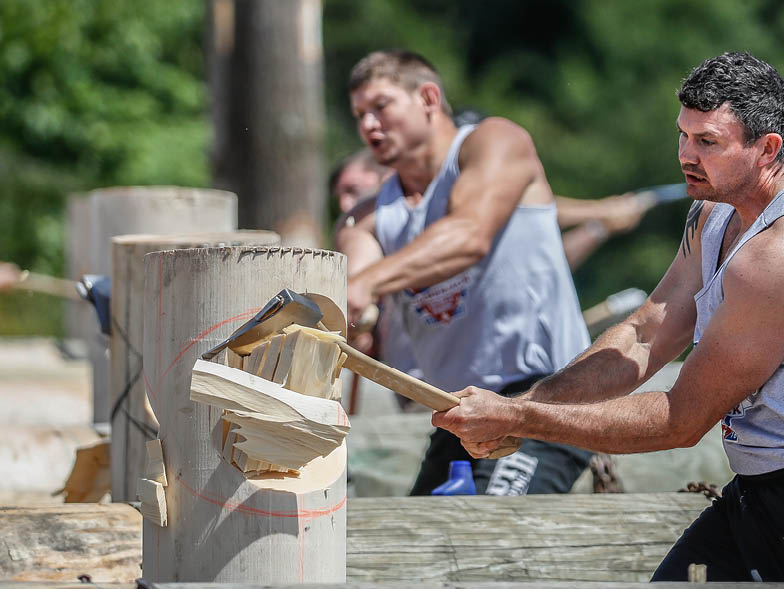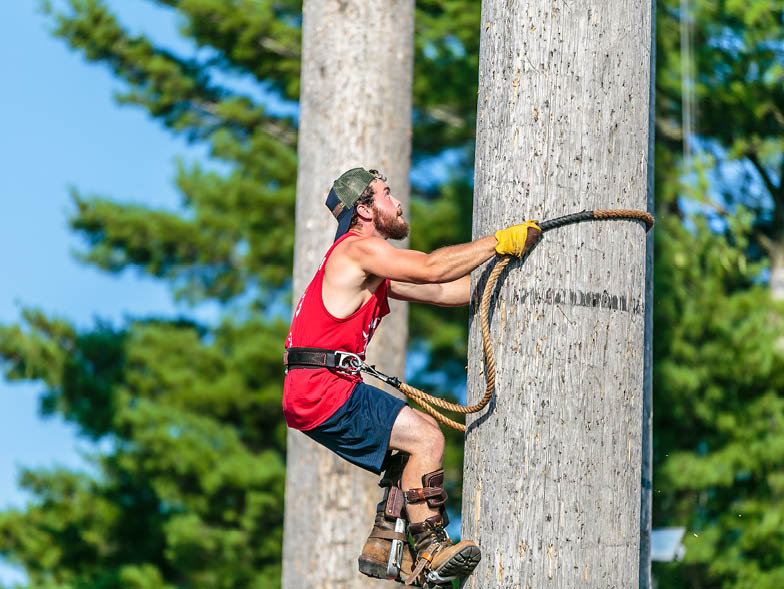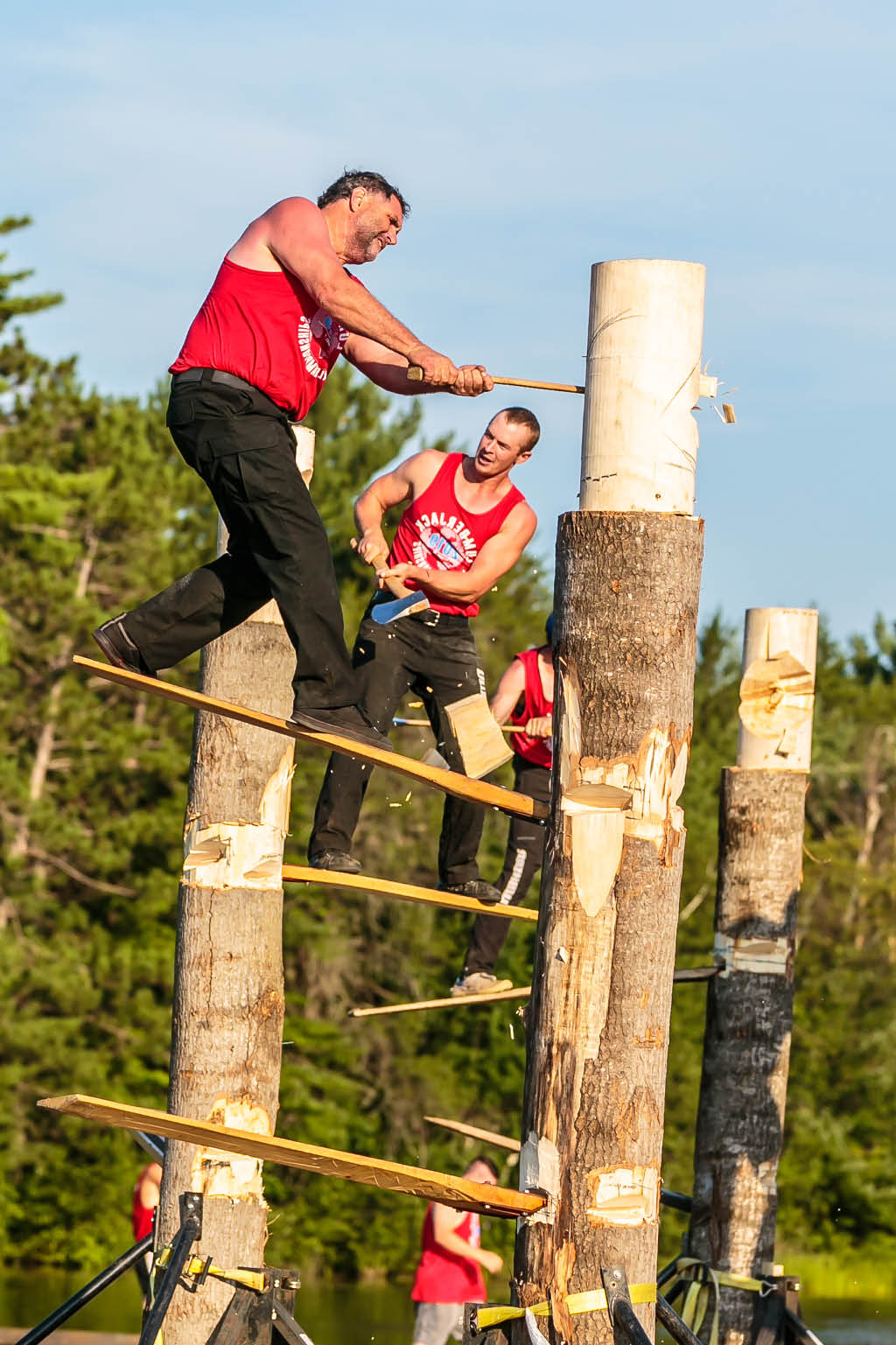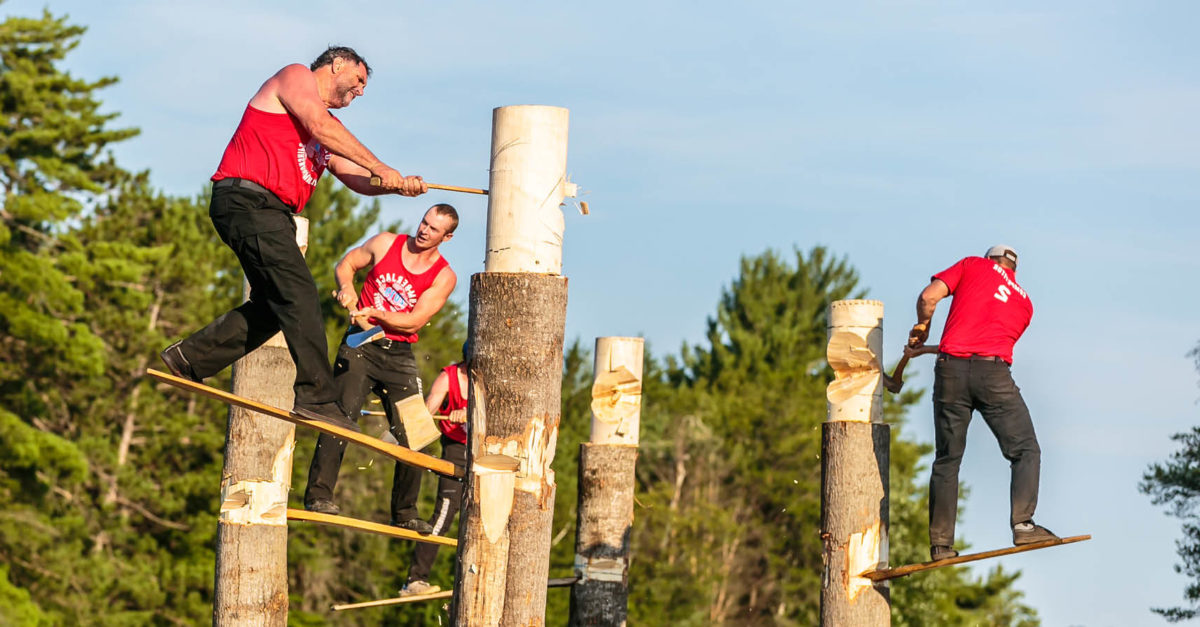Warriors of the Woods
At the turn of the twentieth century, America was much different than it is today. Over half of Americans still lived in the country, and about two out of every five lived on farms. Lumber was an industry giant, with lumberjacks—the men who felled massive trees by hand—being almost legendary figures.
Many events have popped up over the years to honor these brave individuals—with the most popular being timber sports. Even though they’ve been taking place in America since the 1890s, timber sports have caught on in popularity in recent years thanks to media outlets like ESPN. The granddaddy of them all, the Lumberjack World Championships (LWC), has been held for over a half-century in the town of Hayward, Wisconsin.
Where past meets present
Hayward, an outdoorsman’s paradise with a population of 2,300 located about an hour and a half from Minnesota, is somewhat of a throwback itself, according to Nancy Knutson, director of marketing and communications for the Lumberjack World Championships Foundation: “Hayward is a very desirable vacation destination—it’s surrounded by lakes, it’s quite charming, and the community is very welcoming. There’s lots to do here, no matter the season.” In a nod to the town’s charm, she adds: “Hayward even has a new stoplight—we now have five stoplights in town!”
Hayward has hosted these games since 1960 in the renowned Lumberjack Bowl. The venue itself, once used by area timber companies as a holding pond for logs, was named to the National Register of Historic Places in 2018 in honor of its logging roots and timber sports legacy. Hayward native and entrepreneur Tony Wise (who also went on to create the American Birkebeiner, the largest cross-country ski race in North America) founded the LWC as a way “to perpetuate and glorify the working skills of the American lumberjack.” Now the highlight of a three-day festival, the LWC has expanded to include two dozen events, including speed pole climbing, log rolling, and, of course, various sawing and chopping events.
What each competition discipline has in common is a connection to the area’s logging past, according to Knutson. “Every part of the LWC competition is replicating something that happened in the woods before technology was introduced, so it’s keeping the spirit of the timber industry alive,” she says. “For example, in the springboard chop, competitors climb a tall piece of timber by chopping pockets into the ‘tree,’ inserting a springboard to stand on, and then repeating the process until they get to the top, where they chop another log in half. This replicates what lumberjacks used to do in the woods to chop down a tree. Another event, the underhand chop, imitates how lumberjacks would chop a felled tree into pieces: by standing atop it and chopping the log between their feet.
This nod to tradition holds true for the water-based events as well. “Back in the day, mills had to send their logs down the river, and the workers, known as birlers, had to herd the logs like sheep,” Knutson continues. “They used pike poles and hopped from one floating log to another, moving the logs down the river. That’s how our log-rolling events came to pass. For the other water event, the boom run, a series of logs are chained together, and competitors fly across the logs as they are spinning and bouncing beneath their feet. This is an homage to loggers from the past who had to string logs together, end to end in a circle or across a river, to hold floating logs from escaping down the river. If a log boom were to break, a birler had to run across the boom to fix any breaks in the chain of logs; they had to be fast and agile, just like our boom runners today.”

Training for the trees
In these parts, timber sports are a time-honored tradition for many people—even at home. In Hayward, kids will start learning log-rolling at about age three, according to Knutson. High-school students will hone their skills while working at the annual summer lumberjack shows, and they often continue their timber education at one of the dozens of colleges now offering woodsman clubs, including Dartmouth and Penn State. And, of course, many eventually get jobs in the timber industry or at lumberjack shows around the country.
Making it to the level of the Lumberjack World Championships also takes strength and stamina—much like the traits needed to be an old-time logger. That’s why so many of those involved work out by doing specific exercises that will maximize their performance in a particular event, such as weight-lifting, using kettlebells, and running. Also, unlike the all-male lumberjack profession and competitions of yesteryear, women (called “lumberjills”) now take part in these games, both as individuals and in Jack-and-Jill events.
Competition and community may be at the forefront of these championships, but sustainability is as well—which not only helps the environment but also the competition. The wood used for the LWC is grown, with great care, some two hundred miles away at the Menominee Indian Reservation in Keshena, Wisconsin. “Their foresters cut timber at very intensively managed pine stands as part of a long-term sustainable forestry management plan,” says D.J. Aderman, the LWC’s chief of competition. “Considerations for forest health, disease prevention, economic, water and air quality improvement, best management practices, and wildlife are all factors.”
Aderman notes that the LWC uses parts of pine trees for the sawing events and aspen trees for chopping events—uniformity of the trees is important to ensure fair play—but the rest is recycled: “After we procure specific sections of the tree, the base sections of the trees are sent to sawmills and the top portions are sent to pulp and log mills. Absolutely no part of the tree is wasted.”

Fun for everyone
If you plan to attend this event, expect to see some of the best athletic outdoorsman performances in the world. Competitors come from all over North America, but they also flock here from as far as Australia and New Zealand. And it’s open to virtually all age groups—participants who placed in 2019 ranged in age from fifteen to eighty. In 2019, over 120 people vied for over $68,000 in prize money, and over 12,000 spectators—around six times the population of Hayward—attended the event, while countless others live-streamed it on ESPN3.
And expect to be awed while being entertained.
“Every single event is exciting, but the pole climb is probably the most exhilarating event,” Knutson reveals. “These guys use a leather strap to start scrambling up a sixty- or ninety-foot pole—we hear folks liken it to a monkey climbing up a tree. Once at the top, they throw their strap over a stripe and then descend, tapping their climbing gaff at specific points along the pole, as they seemingly freefall back toward the earth. That is definitely a crowd favorite to watch because it’s heart-stopping.”
“People also love the speed and noise of the hot saw, where souped-up snowmobile engines are used to power chainsaws in a fast-paced competition,” she adds. “The boom run is really fun because it’s like watching people try to run across bucking broncos, and the log rolling is always entertaining because the smaller the log, the faster they spin! Each of the events holds a bit of magic for everyone in the crowd. One of the most popular events, though, is actually at the end of each night of LWC competition: the team relay event features speed climbers, boom runners, sawyers and choppers. The athletes love it, and the crowds go wild for it.”

There’s plenty for spectators to do on their own as well, including a Lumberjack 5K Run/Walk, a mini log rolling tank, demonstrations, live music, and food and beverages in the Swinging Axe Beer Garden. (The LWC even has its own once-a-year craft beer called Swinging Axe.) If shopping is your sport of choice, you can browse for souvenirs at the Lumberjack Shop.
The Lumberjack World Championships returns to the Lumberjack Bowl from July 30 to August 1, so if you’re looking for a fun, unique spectacular that’s both historical and trending, watchable in person and streaming online, this may be just the thing for you. You’ll see feats you wouldn’t imagine possible, being done by men and women and by young and old alike, in an iconic venue and idyllic town that transport you back to a time when timber was king.
For more info, visit lumberjackworldchampionships.com









